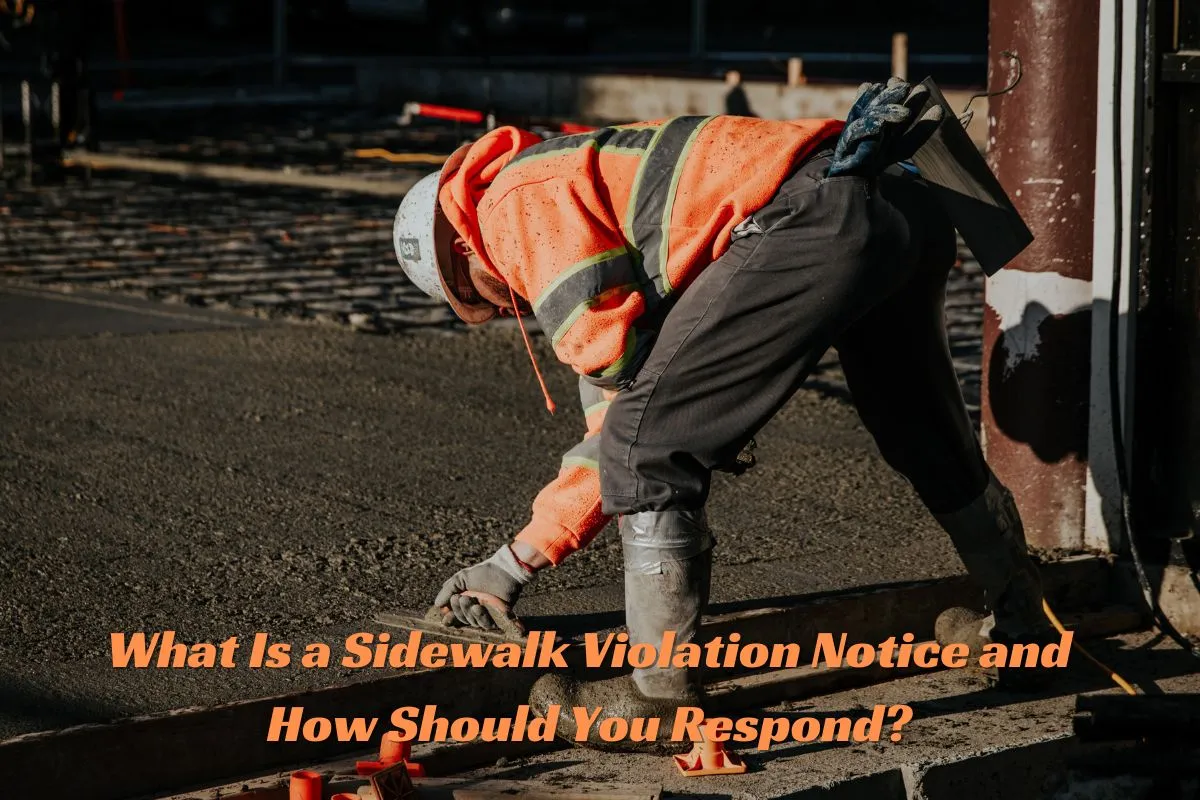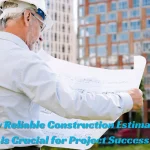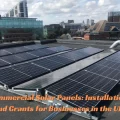Sidewalks are critical components of urban infrastructure, designed to provide safe and accessible pedestrian pathways. While most people take them for granted, sidewalks are subject to regulations—especially in cities where property owners are responsible for maintaining the walkway adjacent to their property. A sidewalk violation notice is a formal alert issued by a city or municipal agency to notify a property owner that a portion of the sidewalk in front of their property is damaged, unsafe, or non-compliant with local codes. Understanding the implications of such a notice and how to respond to it can save time, money, and potential legal trouble.
Understanding the Purpose of a Sidewalk Violation Notice
The primary objective of a sidewalk violation notice is public safety. Uneven surfaces, large cracks, crumbling sections, and hazards like tree root upheavals can make sidewalks dangerous for pedestrians. In many jurisdictions, especially in large urban centers, municipal laws require property owners to maintain the sidewalks abutting their land. When an inspection reveals that a sidewalk has become hazardous or out of compliance with safety standards, a notice is issued to demand corrective action.
Receiving this kind of notification does not necessarily mean that the property owner is facing a fine or immediate penalty. Instead, it serves as a warning that corrective measures must be taken within a specified timeframe. Failure to do so can result in more severe consequences, including fines or city-contracted repairs billed directly to the owner.
What Triggers a Sidewalk Violation
Sidewalk violations are typically identified through routine inspections by municipal agencies, but they can also arise from citizen complaints. If a pedestrian trips and reports the incident, or if a city maintenance crew spots a hazard, an inspection may be initiated. Some cities conduct regular audits of sidewalks, particularly in areas with high foot traffic or known problems with tree root disruptions. Weather damage, construction-related impacts, or general neglect can also lead to the issuance of a violation.
The criteria for violation often include trip hazards created by uneven slabs, severe surface cracks, loose or missing concrete, and ponding water caused by poor slope or drainage. Other less obvious issues—like sidewalk sections that do not meet ADA compliance for slope or width—can also result in a violation, especially in cities with strict accessibility standards.
Steps to Take After Receiving a Violation
The first step upon receiving a sidewalk violation notice is to carefully read the document and note the deadline for compliance. The notice will typically outline the nature of the violation and may include a list of acceptable remedies. Most cities give a specific time window, such as 45 to 75 days, during which the owner must sidewalk repair Brooklyn or contest the notice.
After reviewing the notice, it’s essential to assess the damage either independently or with the help of a professional contractor. Some jurisdictions provide a list of approved contractors, especially if permits are required for the work. Hiring a licensed and insured sidewalk contractor ensures that the repair will meet municipal standards and avoids the risk of failed inspections later.
Once repairs are completed, many cities require the property owner to notify the appropriate department, which may then schedule a follow-up inspection. If the work is found to be satisfactory, the violation will be cleared and officially removed from the city’s record. Keeping thorough documentation of the repair—photos, receipts, and permits—can be helpful in case of future disputes.
Responding to Disputes or Special Situations
There may be situations where a property owner disagrees with the violation, either because the damage originated from city-controlled elements (such as utility work or city-owned trees) or because the sidewalk does not appear to meet the threshold for action. In such cases, most municipalities offer a process for contesting the notice. This usually involves submitting a formal dispute along with photographic evidence or expert evaluation reports.
It’s worth noting that in cases involving tree roots from city-owned trees, the city may offer partial assistance, permit waivers, or even take on the responsibility for repairs. Understanding local policies and tree maintenance ordinances is important before taking action. If the damage involves utilities or other public works, coordinating with the responsible department is critical to resolving the matter without unnecessary expense.
In situations where the property owner is unable to fund repairs within the required timeframe, some cities offer hardship assistance, payment plans, or low-interest financing. These resources are designed to encourage timely repairs without placing an undue burden on homeowners.
Avoiding Future Violations
While it’s impossible to prevent every instance of sidewalk wear and tear, proactive maintenance can drastically reduce the chances of receiving a violation notice. Regular inspections, prompt repairs of small cracks, and proper drainage planning help maintain a safe and compliant walking surface. Trimming back invasive tree roots or using root barriers can also prevent lifting and buckling.
Knowing your responsibilities as a property owner and staying informed about local ordinances ensures that you’re not caught off-guard. Cities often make maintenance guides and code summaries available online or through public works departments, making it easier to stay in compliance.
Conclusion
A sidewalk violation notice may seem alarming at first, but it is ultimately a call to action aimed at preserving public safety and urban accessibility. Responding promptly and responsibly not only clears the violation but also demonstrates commitment to your community and investment in your property’s well-being. By understanding the process, seeking the right professional help, and staying informed about local regulations, you can turn a seemingly unwelcome notice into an opportunity for improvement. Whether you’re a homeowner, landlord, or business owner, taking the time to address sidewalk issues is a step forward in maintaining a safer, more connected neighborhood. Whether you’re a homeowner looking to resolve a DOT violation or a contractor seeking expert insight, sidewalk violation is your one-stop solution for sidewalk compliance in New York City.










